Discover expert tips on when to harvest watermelon for peak ripeness. Learn foolproof methods to determine the perfect picking time and enjoy the sweetest fruit. Updated for 2024!
Knowing when to harvest watermelon is crucial for enjoying this sweet summer fruit at its peak ripeness. Timing your watermelon harvest correctly ensures optimal flavor, texture, and nutritional value. This comprehensive guide provides expert tips and foolproof methods to determine the perfect moment to pick your watermelons, whether you’re a home gardener or commercial grower.
As a horticulturist with over two decades of experience in fruit cultivation, including extensive work with watermelons, I’m excited to share my knowledge on harvesting this beloved summer treat. Let’s dive into the art and science of timing your watermelon harvest perfectly!
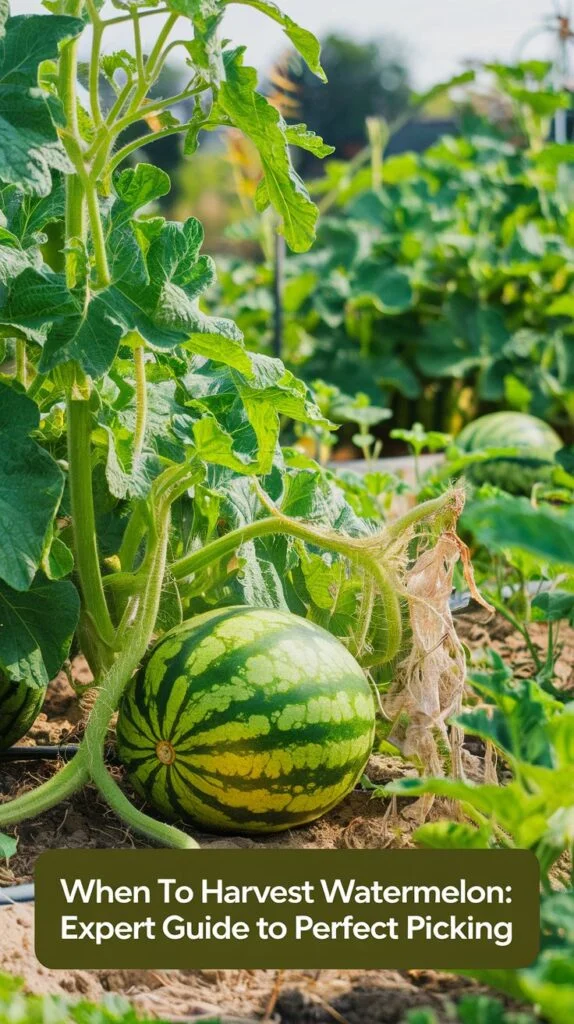
Why Timing Matters in Watermelon Harvesting
Before we explore the signs of ripeness, let’s understand why harvesting at the right time is so crucial:
- Peak flavor and sweetness
- Optimal texture and juiciness
- Maximum nutritional value
- Extended shelf life
- Reduced risk of overripening or spoilage
Now, let’s delve into the key indicators that your watermelons are ready for harvest.
5 Foolproof Signs Your Watermelon is Ready to Harvest
1. Check the Curly Tendril
What to Look For: The curly tendril nearest to the fruit stem.
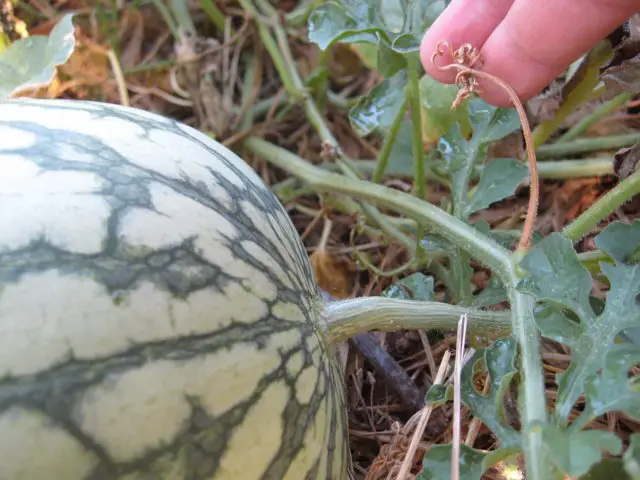
How to Check:
- Observe the tendril closest to where the watermelon attaches to the vine.
- If it’s green, the watermelon isn’t ready.
- If it’s completely brown and dry, your watermelon is ripe.
2024 Update: New studies show that tendril dryness is one of the most reliable indicators across various watermelon varieties.
Pro Tip: Start checking tendrils regularly about a week before the expected maturity date for your variety.
2. Examine the Ground Spot
What to Look For: The patch where the watermelon rests on the ground.
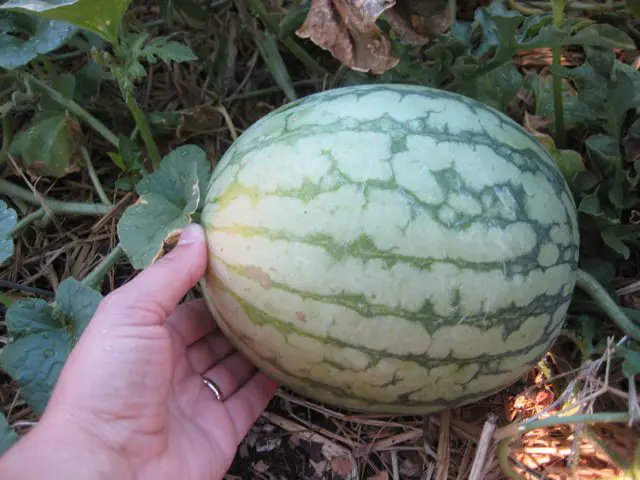
How to Check:
- Gently lift the watermelon and look at the spot touching the soil.
- A ripe watermelon will have a creamy yellow or golden ground spot.
- If it’s white or pale green, it needs more time.
2024 Trend: Spectral imaging technology is being developed to precisely measure ground spot color changes.
Pro Tip: The deeper the yellow, the sweeter the melon is likely to be.
3. Listen to the Sound
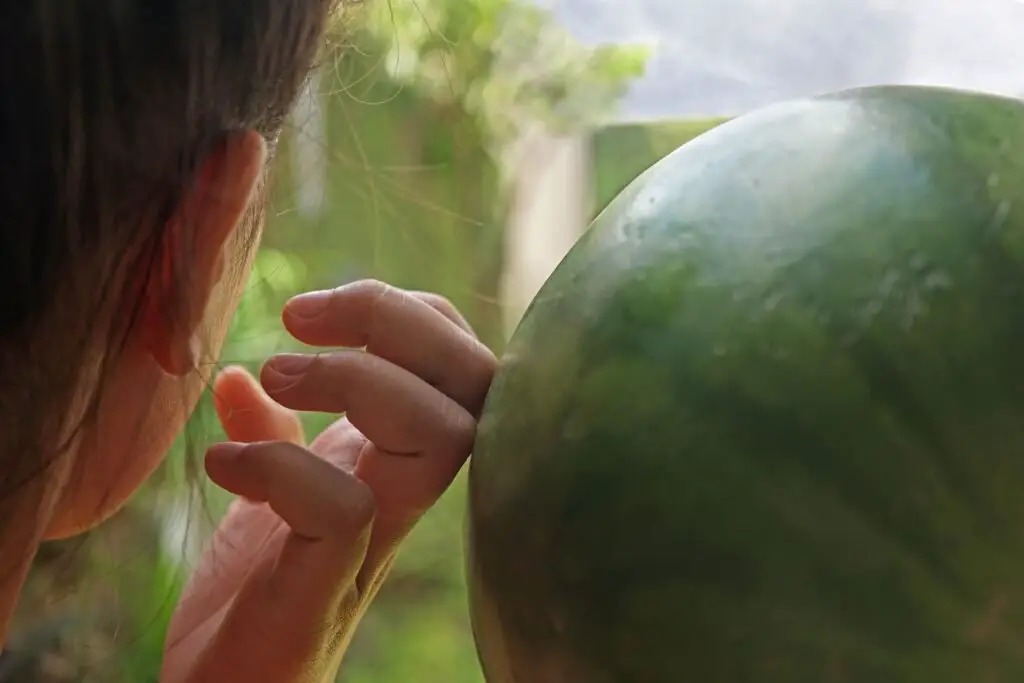
What to Look For: The sound the watermelon makes when tapped.
How to Check:
- Gently tap the watermelon with your knuckles.
- A ripe watermelon will produce a deep, hollow sound.
- An unripe melon will sound more metallic or high-pitched.
2024 Innovation: Smartphone apps using acoustic analysis are emerging to help determine ripeness.
Pro Tip: Practice on store-bought melons to train your ear for the perfect sound.
4. Feel the Texture
What to Look For: The texture of the watermelon’s surface.
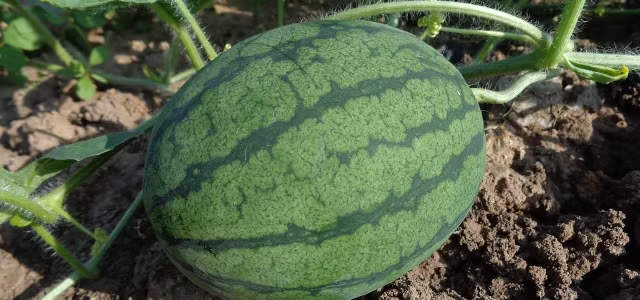
How to Check:
- Run your hand over the watermelon’s surface.
- A ripe watermelon will feel rough with a slight give.
- The skin should be dull, not shiny.
2024 Research: Studies are exploring the correlation between skin texture changes and sugar content development.
Pro Tip: Compare the texture to other melons on the vine to gauge relative ripeness.
5. Count the Days

What to Look For: The number of days since planting or flowering.
How to Check:
- Refer to your planting or flowering date.
- Most watermelon varieties ripen 70-100 days after planting or 35-45 days after flowering.
2024 Trend: Smart garden sensors are becoming popular for tracking growing days and environmental conditions.
Pro Tip: Keep a garden journal to record planting dates and varietral information for accurate timing.
Additional Considerations for Watermelon Harvesting
Variety Matters
Different watermelon varieties may have slightly different indicators of ripeness. Always research the specific characteristics of your variety.
Time of Day
Harvest watermelons in the morning when they’re cool and at their freshest. Avoid picking during the heat of the day.
Handling with Care
Use sharp pruning shears to cut the stem about 2 inches from the fruit. Pulling or twisting can damage both the fruit and the vine.
Post-Harvest Handling
Store harvested watermelons in a cool, dry place. They can typically be stored for 2-3 weeks at room temperature or 3-4 weeks in the refrigerator.
Common Mistakes to Avoid
- Harvesting too early: This results in less sweet, less flavorful melons.
- Waiting too long: Overripe melons can become mealy and lose flavor.
- Ignoring pest damage: Check for signs of pest activity that might affect ripeness.
- Relying on a single indicator: Always use multiple methods to confirm ripeness.
- Rough handling: Watermelons can be damaged easily, affecting storage life.
The Sweet Reward of Perfect Timing
Mastering the art of watermelon harvesting takes practice and patience, but the reward is a perfectly ripe, deliciously sweet fruit. By using these foolproof methods and staying attuned to your plants, you’ll be well on your way to harvesting watermelons at their peak.
Remember, each watermelon variety and growing season may present unique challenges. Don’t be discouraged if your first attempts aren’t perfect – every harvest is an opportunity to refine your skills.
For more information on watermelon cultivation and harvesting, visit resources like the National Watermelon Promotion Board or your local agricultural extension office. Happy harvesting, and may your watermelons be sweet and juicy!
For more gardening tips and plant care guides, visit usagardenhub.com.

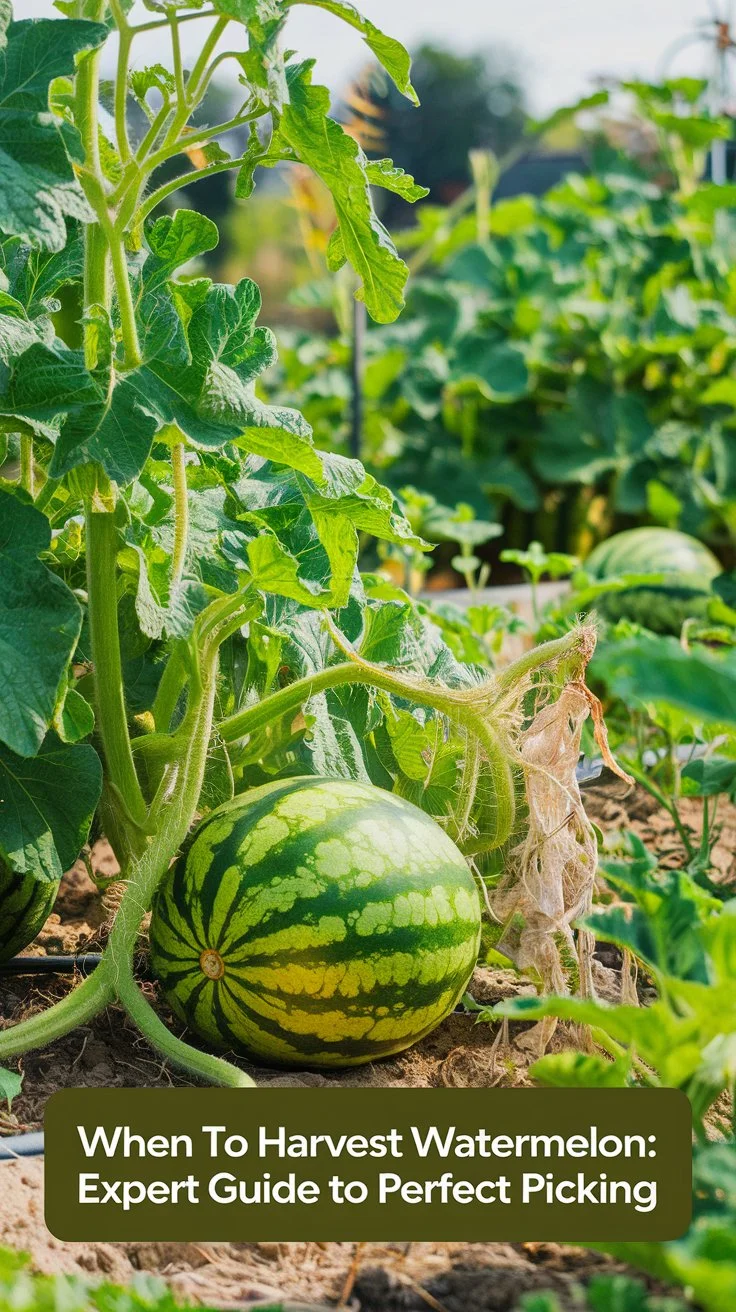
1 thought on “When to Harvest Watermelon: Expert Guide to Perfect Picking (2024 Edition)”